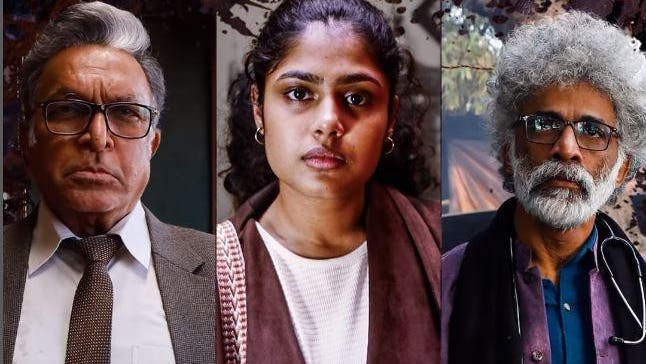Indian filmmaker Nila Madhab Panda is best known for his documentary-style feature films that bring out the stark realities of climate change and the urgent need for environment conservation. His latest – his digital debut The Jengaburu Curse currently streaming on Sony LIV – is no different. Set in the Indian state of Odisha, the show tells the story of human interference with nature and how human greed has destroyed nature and its balance. In an exclusive interview, Panda talks about the new show, why he prefers to highlight environmental issues, and much more.
Tell us about the difficulties you faced while making The Jengaburu Case.
It took us three years, perhaps a little more than that. The major challenge was reasearch. The show is not some fictitious place – it is about the real world and real people. It is driven by so many realities that can be identified across the globe. Of course, it is set in India but the incidents are global. Secondly, the story is about nature and what affects us in day-to-day life. Bringing that to cinema was quite a task.
It was a challenge for someone like me to take the story to long form. Cracking the craft of the storytelling and screenplay in this medium (long formats web series for digital platforms) was a hard task for me.
What efforts did you make to overcome the challenges?
We experimented a lot in terms of writing. I knew the world from where the story comes, and the story I wanted to narrate. The advantage of long form is that you can express in a better manner. But, you also have to ensure that your characters have a proper arc – the drama of the story alone won’t do it all.
I created an entirely new tribe (for The Jengaburu Curse) – of course it is inspired by many tribes that actually exist in my state. I also used the tribals as villagers in my show. It is interesting how we brought tribals into the picture as well…
Your films speak otherwise, but you say that you do not want to be known as an activist, but an artist.
Despite being one of the biggest cinema producing countries in the world, I feel we (India) have not grown big in terms of the kind of digital shows. I mean, look at Irani shows, for example. How many Indian shows are global in nature and appeal?
When you feel Goa Police is corrupt, you make films on that. When the underworld rules Mumbai, you make 75 films on the underworld. For the 75th anniversary of India’s independance from the British, you make 50 films. So, you do make films to talk about issues that affect you. Now, animals are dying, the temperature is rising, we have polluted our air and water. Who will tell these stories?
I am an artist who wants to tell stories. Activism comes as a by-product. I tell the stories which affect me, and are around me. That activisim is part of my life. You may rebel against your society or family, my revolution and rebellion are for us. My films are revolutionary. I made films on rise of the sea-level, air and water pollution at times when people did not believe in the climatic changes.
Unfortunately, we are so engaged with entertainment that we do not realise how films are important to society. We do not realise how the right film can give so much essence to the world, alongwith entertainment.
(This conversation has been edited and condensed for clarity).
Read the full article here





